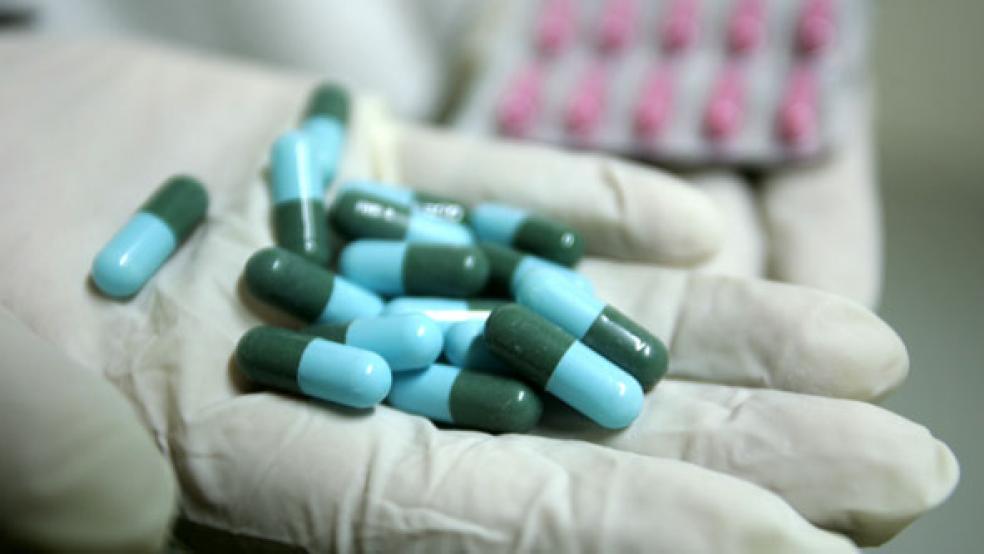Consumers trust the Food and Drug Administration when it says generic drugs are comparable to the brands they replace. You don’t need an opinion poll to prove that. Generic manufacturers’ share of the market surged last year to 75 percent of all prescriptions, up from 57 percent in 2004. Cost-conscious patients increased their purchase of generic prescriptions by 5.9 percent in 2009, while prescriptions for brand name drugs fell 7.6 percent, according to IMS Health.
Yet a steady trickle of reports from patients who suffered an adverse reaction after switching to a generic has put the FDA’s Office of Generic Drugs on the hot seat. For instance, in the first half of 2007, the FDA received 85 complaints from patients switching from GlaxoSmithKline’s Wellbutrin, a popular antidepressant, to Teva Pharmaceutical’s bupropion, the generic equivalent, including 78 who said their depression had returned.
The American Psychiatric Association immediately began pressuring the FDA to reconsider its standards for approving generic drugs. Columbia University psychiatry professor Jeffrey Lieberman (login required) said, “Many clinicians have patients who have experienced variation in response when switching from a name brand to a generic.” Lieberman, who consults for Glaxo and other antidepressant manufacturers, told Psychiatric News , “In some cases these have been related to side effects; in other cases, it has been a difference in efficacy.”
After re-reviewing the evidence, the FDA declared in September 2007 that the small differences in the two formulations “were not outside the established boundaries for equivalence nor are they different from other bupropion products known to be effective. The recurrent nature of major depressive disorder offers a scientifically reasonable explanation for the reports of lack of efficacy following a switch to a generic product,” the agency said in its report.
Yet that didn’t quell the complaints. Last summer, a yearlong investigation by Self Magazine into the alleged dangers of generic drugs featured a young woman on generic bupropion whose health “fell apart” shortly after being switched. Headlined “Bad Bargain,” the story ranged not only across the highly technical issues involved in establishing bioequivalence for generic drugs, but zeroed in on the shoddy manufacturing practices at some generic drug makers like India’s Ranbaxy, whose overseas and U.S. plants have been sanctioned numerous times by the FDA.
The issue came to a head last week at a regular meeting of the FDA’s pharmaceutical science advisory committee (full disclosure: I sit on that committee as the consumer representative). The FDA wanted its expert advisers to weigh in on whether it should adopt a slightly more restrictive standard for approving generic drugs. The stakes were pretty high. Some of the brand name pharmaceutical industry’s biggest moneymakers will be coming off patent in the next two years. They include Pfizer’s Lipitor for lowering cholesterol, the nation’s biggest selling drug with $11.4 billion in sales last year.
In addition, the recent health care reform bill included a legal path for the FDA to begin approving generic biologics, which are the most expensive drugs on the market, often costing $10,000 a month or more. The Obama administration hopes to save $7 billion in Medicare and Medicaid costs over the next decade by purchasing generic biologics. Tightening the standard could keep some generic firms from even trying to replicate hard-to-produce biologics.
The issues in proving comparability between a brand name drug and a generic are pretty technical. They involve how well the generic, whose active ingredient is exactly the same, matches the original pill in terms of how fast it dissolves, how long it stays in the blood stream and how fast it is metabolized and excreted, all of which can influence its peak and average concentrations. Bioequivalence testing involves taking those measurements for both the brand drug and the generic in a few dozen healthy volunteers.
Variations in performance are inevitable. In fact, if you tested two lots of a brand name drug, they wouldn’t come out the same. The question for the FDA, and the advisory panel, was what should be the acceptable margin of error.
In making the proposal for a tighter standard, Dale Conner, director of the division of bioequivalence at FDA, admitted it wouldn’t affect the vast majority of generic drug approvals. In fact, the FDA analyzed more than 2,000 generic drug applications received between 1996 and 2007 and found that just 2.6 percent of the drugs would have been rejected had the proposed tighter standard for equivalency been in place. Teva’s bupropion fell safely within the proposed new parameters.
The goal, the FDA admitted, was to show it was doing something about a problem that didn’t really exist. Not surprisingly, the committee, which is made up mostly of academics, turned the agency down by a 12-2 vote (I voted with the majority). “This is more of a public relations problem than strict science,” said Elizabeth Topp, who chaired the committee and is head of the Department of Industrial and Physical Pharmacy at Purdue University.
Of course, there are problems with some generic drugs, but they have nothing to do with the FDA approval process. Poor manufacturing quality controls after the generic is approved, as shown in the recent Chinese heparin scandal and Ranbaxy case, harm far more people than poorly designed generic drugs. And that problem isn’t limited to generics. Look at what just happened at Genzyme, one of the nation’s leading biotechnology firms. The company had to shut down its production line after impurities were found in two of its best-selling drugs for treating rare diseases.
Only in the past year has the FDA begun deploying inspectors abroad. (There are now 15, according to its latest budget request.) Its domestic manufacturing oversight staff is finally growing again after years of decline. If the FDA wants to protect the drug-buying public (and improve its image), it should focus greater attention and resources on policing manufacturing plants, not on tinkering with bioequivalence standards that are already acceptable to the vast majority of Americans.





